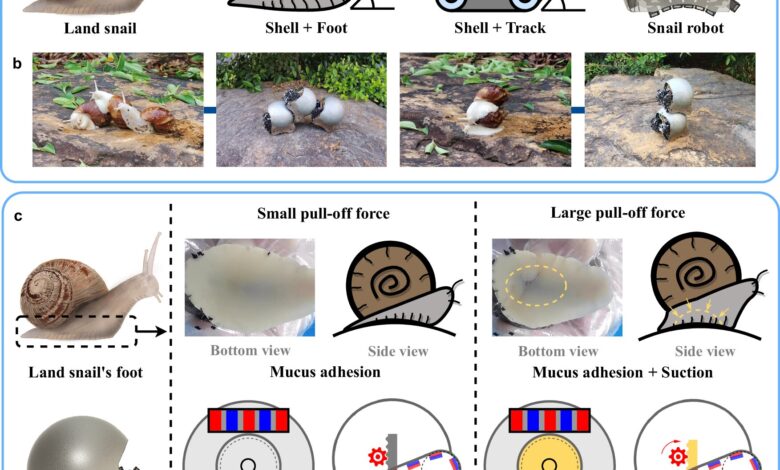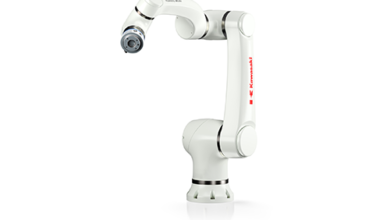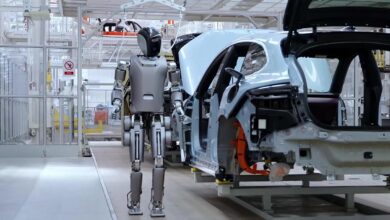Scientists create robot snails that can move independently using tracks or work together to climb

× close
A team of roboticists at the Chinese University of Hong Kong has created a robot snail with a helmet-like shell that moves by rolling around on bulldozer-like tracks. They have published a paper on their research in Nature Communications.
Over the past several years, robot engineers have developed a wide variety of robots. Some can fly, others can swim and more can move across floors or landscapes. In this new effort, the researchers noted that the flying and swimming robots are able to move about in three-dimensional space, while those that walk, roll or crawl are limited to two dimensions. They sought to bridge that gap by developing a type of robot that could create its own three-dimensional space.
The result was a robot that looks like a snail, with a metal shell and a track that allows it to move around. In action, it resembles a WWI-era tank. But what sets the snail-like robot apart is the retractable suction cup that sits between its tracks. Its purpose is to allow the robot to adhere to another robot just like it.
Several robots can connect by using the suction cup to cling to the helmet of the robot ahead to form a train. They can also create stair steps that allow others of their kind to climb up and over objects. Because each of the robots has its own processor, it can work on its own or with others—when working together, the robots communicate with one another, helping to coordinate activities.
The research team notes that the tracks allow the robots to move across a wide variety of surfaces, both smooth and uneven. There are also magnets embedded in the tracks that help the robots climb on top of each other to create steps or other structures. Once they have the correct placement, they deploy the suction cup to hold fast.
The team found the robots capable of moving independently, climbing up steps as a collective and even making their way across gaps like ants do when forming bridges. They note that currently the robots are remotely controlled, but the researchers hope the robots will eventually be able to work autonomously. The team believes they could be used in field research, conducting search and rescue, or even in space missions as planetary probes.
More information:
Da Zhao et al, Snail-inspired robotic swarms: a hybrid connector drives collective adaptation in unstructured outdoor environments, Nature Communications (2024). DOI: 10.1038/s41467-024-47788-2
Journal information:
Nature Communications
© 2024 Science X Network



